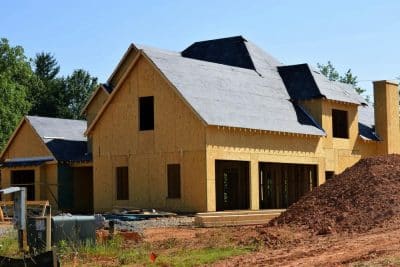
In the world of construction, the importance of integrating landscaping into the planning process cannot be overstated. As more projects strive toward harmonious design principles, the role of landscaping emerges as a critical component that contributes to the overall success of any construction endeavor. By understanding how landscaping influences aesthetic value, environmental impact, and project functionality, stakeholders can make informed decisions that benefit both the structure and its surroundings.
Understanding the Importance of Landscaping in Construction
Landscaping plays a pivotal role in construction by enhancing the appeal and functionality of buildings. A well-thought-out landscape can transform a mundane structure into a visually stunning space that resonates with its environment and attracts potential users.
Furthermore, landscaping provides essential ecological benefits such as reducing urban heat, managing stormwater runoff, and improving air quality. These factors contribute not only to the well-being of residents but also to the overall sustainability of the project.
The Role of Landscaping in Enhancing Building Aesthetics
Visual impact is one of the most readily apparent benefits of landscaping. Thoughtfully designed outdoor spaces such as gardens, patios, and green areas can complement a building’s architecture, leading to a cohesive design. This can elevate the perceived value of a property, making it more attractive to occupants and visitors alike.
Effective landscaping can also create a welcoming atmosphere, incorporating elements like trees, shrubs, flowers, and pathways to engage people and encourage interaction with the environment.
Landscaping for Environmental Sustainability in Construction
Another critical aspect of landscaping is its potential for promoting environmental sustainability. Sustainable landscape practices can significantly lower energy consumption by providing natural cooling through shade and strategically placed plantings.
Additionally, landscaping can enhance biodiversity, support local wildlife, and encourage eco-friendly habits among residents. Utilizing native plants or even artificial grass for landscaping can minimize the need for irrigation and maintenance, thereby reducing the overall carbon footprint of a construction project.
The Process of Integrating Landscaping into Construction Planning
To successfully integrate landscaping into the construction planning process, a structured approach is necessary. This involves several stages, from initial site assessment to final implementation. Each stage requires collaboration between professionals to ensure that the landscape design aligns seamlessly with construction objectives.
Initial Assessment and Site Analysis
The first step in this process is conducting a thorough site analysis. Understanding the existing conditions, including soil type, topography, climate, and ecological factors, is crucial for making informed landscaping decisions.
This assessment not only identifies opportunities for enhancement but also determines any limitations that may impact landscape design. For example, particular attention should be paid to drainage issues and sunlight exposure, as these elements can greatly influence plant selection and layout.
Designing the Landscape Layout
Once the site analysis is complete, the next step is to create a landscape layout. This design should harmoniously integrate with the overall construction plans while addressing both aesthetic and functional goals.
During this phase, considerations such as hardscaping (paved paths, seating areas, etc.), plant selection, and irrigation systems must be methodically planned to ensure a cohesive and sustainable environment. Engaging with an expert landscaping company during this stage can lead to innovative solutions tailored to the specific site.
Incorporating Landscaping into Construction Schedules
Timing is essential in construction; therefore, incorporating landscaping activities into the overall construction schedule is crucial. By establishing clear timelines and milestones, teams can avoid conflicts and ensure that landscaping efforts complement ongoing construction work.
It’s essential to allow for pre-construction preparations, such as soil amendments and plant procurement, to guarantee a smooth transition into the landscaping phase once the building structure is complete.
Challenges in Integrating Landscaping into Construction Planning
Despite the advantages of integrating landscaping into construction, challenges do exist. From budget constraints to site-specific issues, successful integration requires careful consideration and planning.
Balancing Aesthetics and Functionality
One of the main challenges is striking the right balance between aesthetics and functionality. While a beautifully designed landscape enhances visual appeal, it must also serve practical purposes, such as accessibility and maintenance.
Finding this balance often requires critical thinking and a willingness to adapt the design as necessary throughout the construction process.
Dealing with Environmental Constraints
Environmental factors can pose significant challenges. Natural elements such as soil quality, rainfall patterns, and wildlife habitats must be taken into account to avoid disruptive impacts on both the local ecosystem and the project’s integrity.
Engaging with environmental specialists can provide valuable insights into how to work within these constraints while still achieving the desired design outcomes.
Managing Costs and Budgeting
Lastly, managing costs is a common hurdle in the integration process. Landscaping can sometimes be viewed as an additional expense rather than an investment. Viewpoints can shift, however, when the long-term benefits of energy savings and property value appreciation are considered.
Establishing a clear budget that incorporates landscaping costs from the very beginning, including a schedule of values, will help prevent surprises and ensure that project goals remain attainable.
Strategies for Successful Integration of Landscaping in Construction
With the challenges acknowledged, it’s essential to explore strategies that can facilitate successful landscape integration. By employing collaborative efforts and innovative techniques, stakeholders can enhance their projects significantly.
Collaborative Planning between Landscape Architects and Construction Engineers
One of the most effective strategies is fostering collaboration amongst landscape architects, construction engineers, and project managers. Open communication and teamwork allow for the integration of insights and expertise from all parties involved. This synergy can lead to more holistic design decisions.
Regular meetings throughout the planning and construction phases can ensure that any issues are addressed promptly, keeping the project on track.
Utilizing Technology for Landscape Design and Planning
Another advantage is the incorporation of technology into the landscape design and planning processes. Software for 3D modeling and geographic information systems can offer valuable visualizations that enhance decision-making.
These tools allow teams to experiment with various design options and quickly assess their impacts on both aesthetics and functionality.
Adapting to Site-Specific Conditions and Requirements
Lastly, it’s crucial to adapt to the specific conditions presented by the site. By understanding local environmental factors, stakeholders can tailor their landscaping approaches to ensure suitability for both the climate and ecosystem.
Customizing the landscape design to meet these unique requirements not only promotes sustainability but also enhances the overall success of the construction project.
Integrating landscaping into the construction planning process is an investment in the longevity and beauty of a project. Through collaborative efforts, strategic planning, and a commitment to sustainability, stakeholders can create spaces that thrive, both visually and practically.








